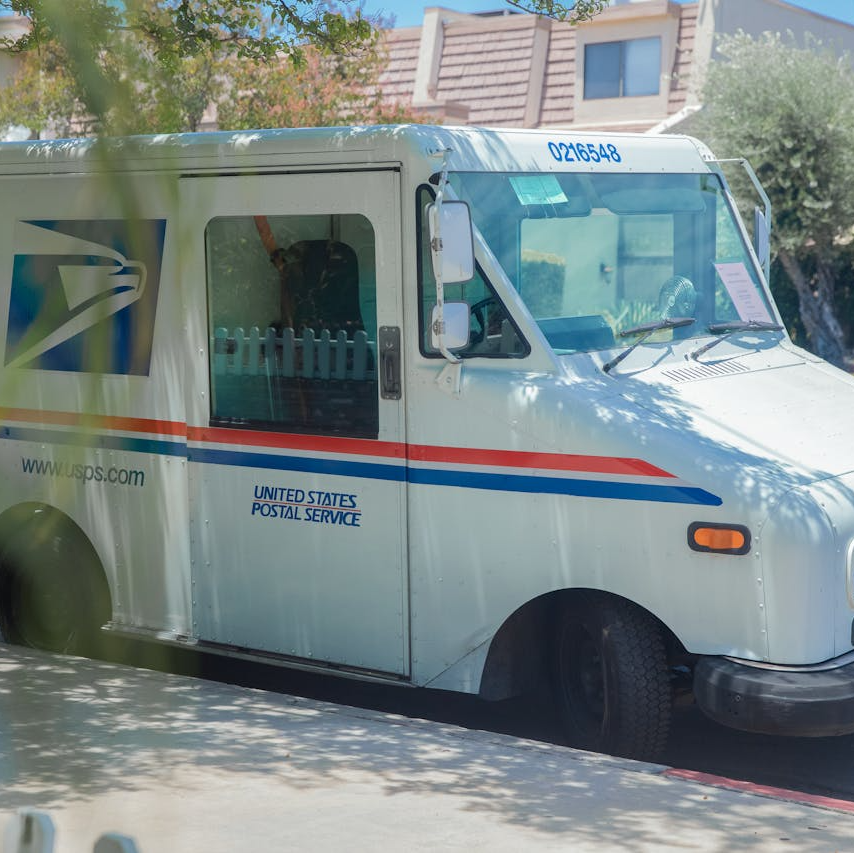Key Takeaways
-
Enrolling in both PSHB and Medicare might offer layered coverage, but that doesn’t mean it’s the right choice for every USPS retiree or employee nearing retirement.
-
Understanding how PSHB and Medicare work together—and sometimes against your budget—can help you avoid paying for more coverage than you actually need.
Not Every Health Coverage Combo is a Win
If you’re a Postal Service employee or retiree, you’ve probably heard that combining your Postal Service Health Benefits (PSHB) with Medicare gives you the most protection. That sounds great on paper. But let’s be real: more coverage isn’t always smarter coverage—especially when you’re the one paying for it.
While PSHB and Medicare can complement each other in many ways, they can also overlap or even create unnecessary costs. Before locking in both, it’s worth taking a step back and figuring out what actually makes sense for your health needs, lifestyle, and budget.
Breaking Down the PSHB Basics
Starting in 2025, PSHB officially replaces FEHB for Postal Service workers and retirees. It’s still administered by the Office of Personnel Management (OPM), but it’s specifically tailored to USPS folks like you.
Here’s what PSHB brings to the table:
-
Access to a range of health plans selected for USPS employees and retirees
-
Government pays around 70% of the premium
-
Coverage includes hospital care, doctor visits, preventive services, and more
-
Automatic integration with Medicare Part D (prescription coverage) for those enrolled in Medicare
The key shift? If you’re retired and eligible for Medicare Part B, you’re required to enroll in it to keep your PSHB coverage.
Medicare: What It Actually Covers
Medicare is split into parts:
-
Part A (Hospital Insurance): Usually premium-free, covers inpatient hospital stays, skilled nursing, hospice, and some home health care
-
Part B (Medical Insurance): Covers outpatient care, doctor visits, and preventive services; monthly premium applies
-
Part D (Prescription Drugs): Covers medications, often through stand-alone or integrated plans
So what does that mean for you? When you pair PSHB with Medicare, you’re essentially stacking two systems that often cover the same things. That’s not always a bad thing—but it can be overkill depending on your situation.
1. You Could Be Paying Twice for Similar Coverage
One of the biggest downsides of carrying both PSHB and Medicare Part B is duplicate coverage. You might find that both plans are covering the same services—with you footing the bill for both.
Let’s say you need a routine doctor visit. Medicare Part B might cover 80% of the cost. PSHB could pick up the remaining 20% as a secondary payer. Sounds good, right? But what if that doctor visit only costs you a $25 copay with PSHB alone? Suddenly, you’re wondering why you’re paying monthly premiums for Medicare Part B in the first place.
2. Premium Costs Add Up Quickly
Medicare Part B isn’t free—not even close. In 2025, the standard monthly premium is $185. If you’re also paying your share of PSHB premiums, those monthly costs can pile up fast.
Let’s do some quick math: $185 for Medicare Part B plus your PSHB premium could easily mean $400 or more out of your pocket every month. Multiply that by 12 months, and you’re looking at close to $5,000 annually for coverage that may not always offer significant advantages.
3. Medicare Isn’t Always Needed If You Have Great PSHB Coverage
Some PSHB plans are robust enough that you might not need Medicare Part B at all—except that now, if you’re Medicare-eligible and retired, you’re required to enroll.
In theory, you could receive excellent care under your PSHB plan alone. Many of these plans include low deductibles, generous copay structures, and strong networks. So adding Medicare Part B might not actually change much about your healthcare experience—except your monthly bills.
4. You Might Not Use Both Plans Equally
Here’s a little-known truth: some retirees end up using their PSHB plan far more than Medicare, or vice versa. Why? Habit, provider preference, or just the path of least resistance.
But you’re still paying for both. If you rarely use your Medicare benefits, why are you paying hundreds each month for them? The reverse is also true—if you mostly rely on Medicare, your PSHB costs might feel like a waste.
5. Coordination of Benefits Can Be Confusing
When you have both PSHB and Medicare, one becomes your primary payer, and the other becomes secondary. While this coordination helps cover more services, it can also lead to headaches:
-
Unexpected out-of-pocket costs
-
Confusing explanation of benefits (EOBs)
-
Delays in claims processing
If you’re not careful, you could spend more time on the phone with customer service than at the doctor’s office.
6. High-Income Surcharges Can Sneak Up on You
Medicare Part B premiums go up if your income crosses a certain threshold. These Income-Related Monthly Adjustment Amounts (IRMAA) can make Medicare even more expensive. And yes, retirement income counts too.
You might be retired and still paying a higher Part B premium just because of your savings or annuity income. Combine that with PSHB premiums, and it may feel like you’re being penalized for planning well.
When Having Both PSHB and Medicare Makes Sense
Now, to be fair, some people do benefit from having both. You might want to keep both if:
-
You see multiple doctors or specialists and want fewer out-of-pocket costs
-
You travel often and want broader national coverage
-
Your PSHB plan offers added perks for Medicare enrollees like premium reimbursements or waived deductibles
Some retirees with chronic conditions or expensive prescriptions also find peace of mind in having both systems working together.
What You Should Think Through Before Making a Decision
You can’t always opt out of Medicare Part B if you’re a Medicare-eligible retiree under PSHB, but if you’re still working or planning ahead, here’s what you should weigh:
-
Monthly Cost Impact: Can your budget absorb the combined premium costs?
-
Health Needs: Are you managing chronic conditions or do you need frequent care?
-
Travel Habits: Do you live part-time in another state or travel for long stretches?
-
Provider Preferences: Are your current doctors in Medicare networks, PSHB networks, or both?
-
Risk Comfort: Would you rather over-insure for peace of mind or pay only for what you need?
These questions aren’t always easy to answer, but they’re essential to avoid regrets later.
Don’t Forget Prescription Coverage Details
If you have both PSHB and Medicare, your prescription drugs will typically be handled through a Medicare Part D Employer Group Waiver Plan (EGWP) built into your PSHB. You’re automatically enrolled in this if you’re eligible, but coverage rules may vary.
So again—do you need double coverage if you’re already getting prescription benefits from PSHB? Or would Medicare add extra value in this area? Take a close look.
Flexibility Decreases Once You Enroll
Here’s the kicker: once you enroll in Medicare Part B, you can’t just drop it later if you change your mind. You’ll face late enrollment penalties and gaps in coverage if you try to re-enroll later. So if you’re approaching retirement and still working, think carefully before jumping in.
Also keep in mind: if you retire after 2025 and are Medicare-eligible, Part B enrollment is no longer optional if you want to keep your PSHB plan.
What If You’re Still Working?
If you’re an active Postal Service employee turning 65 in 2025 or beyond, you aren’t required to enroll in Medicare yet. You can keep your PSHB plan without adding Part B. But once you retire, the Medicare requirement kicks in.
This gives you some planning space. If you’re still working, now is a great time to:
-
Run a cost-benefit analysis
-
Compare plan brochures
-
Understand what your preferred providers accept
-
Estimate future out-of-pocket costs
Smart Planning Starts Before Retirement
Don’t wait until the last minute to figure this out. The Open Season from November to December each year is your opportunity to review your PSHB plan and make changes. This is also the time to prepare for the Medicare coordination rules that will apply once you retire.
Also, don’t forget that PSHB plans can change their benefits and cost-sharing each year. Reviewing the Annual Notice of Changes is essential to avoid surprises.
Choosing the Right Combo for Your Needs
The truth is, there’s no one-size-fits-all answer. Some Postal Service retirees benefit tremendously from the layered protections of both PSHB and Medicare. Others find themselves overpaying for duplicated services and underusing one or both programs.
Understanding the costs, coverage, and coordination between PSHB and Medicare in 2025 will help you make a decision that feels right—not just what seems standard or expected.
Take the Guesswork Out of It
Choosing between PSHB and Medicare (or deciding to go with both) can feel like a maze. But you don’t have to go through it alone. If you’re nearing retirement or just want to be proactive, get in touch with a licensed agent listed on this website for professional advice tailored to your specific needs.











